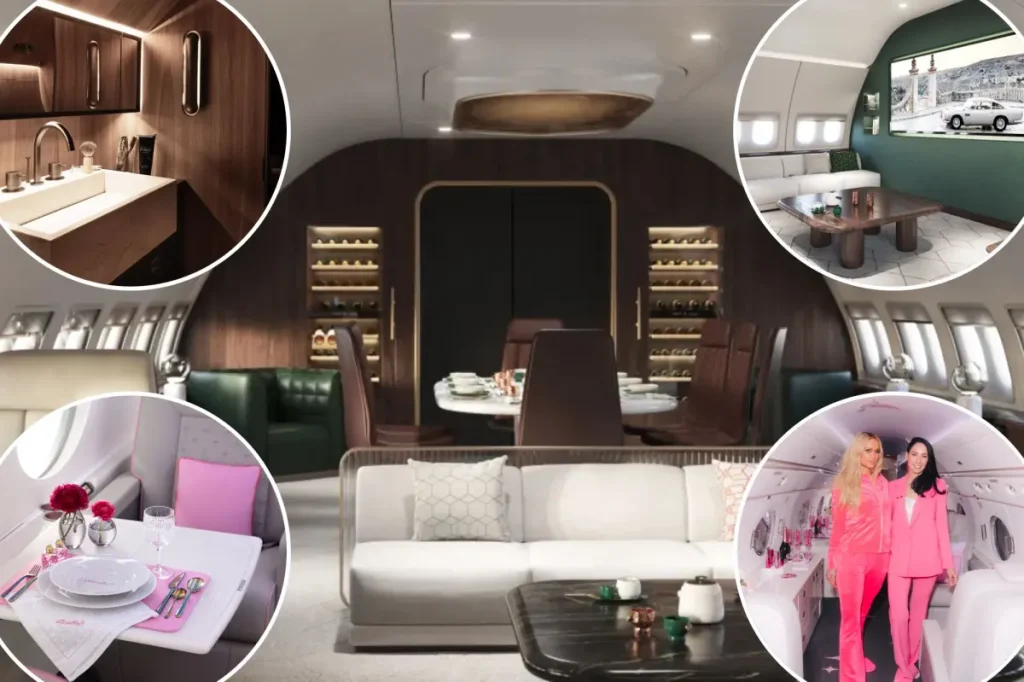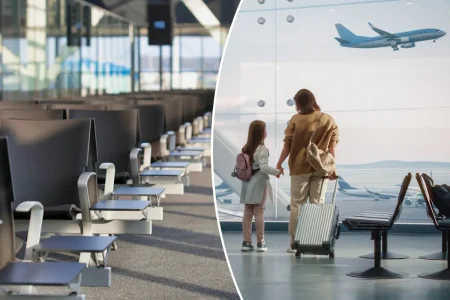The Luxury Sky Life: Inside the Soaring World of Private Jet Design
In a world where ultra-luxury has become increasingly normalized, owning the world’s largest superyacht no longer secures your place among the elite. Today’s status symbol of choice is the private jet—not just any jet, but one meticulously customized to reflect personal taste and lifestyle. This trend has exploded since the pandemic, with more wealthy individuals seeking to travel on their own terms, creating a booming market for private aviation design that transforms standard aircraft into flying mansions.
The numbers reveal how significant this market has become. Currently, over 15,000 private jets are registered in the United States alone, with deliveries of new planes projected to reach 820 this year—up significantly from 644 in 2020. This surge was evident at September’s Ryder Cup on Long Island, where more than 3,000 private flights descended upon the greater New York area. Behind this growth is not just full ownership but also fractional ownership programs that allow more individuals to access private aviation. With this expansion comes increased demand for personalized interiors, turning aircraft into extensions of owners’ homes. As Edward Yedid of GRADE New York explains, “People love design and are traveling more since COVID, and so the market for private jets for Americans has increased. And if they have a designer for their houses, they’ll likely want them to design the interiors of their plane, too.”
The financial commitment to these flying palaces is staggering. While a popular Gulfstream G500 starts at around $45 million, the interior customization represents another significant investment. According to Sarah Mespelt Larranaga, a specialist in private jet interior design, design services typically cost between $150,000 and $200,000, but the actual refurbishment can range from $2 million to $5 million. Some projects, like Patrick Knowles’ designs, can command fees from $250,000 to over a million dollars, plus materials. These costs haven’t deterred clients—in fact, Larranaga reports, “I have more clients than ever at the moment,” currently working on multiple high-end aircraft including a Falcon 7X, a Gulfstream D550, a Gulfstream D650, and a Falcon 2000. After nearly two decades in the industry and more than 100 completed projects, she notes that finding facilities capable of executing these elaborate visions has become increasingly challenging due to high demand.
The requests from jet owners range from practical to extravagant, pushing designers to create innovative solutions within the constraints of aviation. Some clients seek calm, serene environments that make them feel secure in the sky, while others want their aircraft to reflect specific aesthetic or cultural values. One Chinese client insisted his jet interior adhere strictly to feng shui principles. French design company Pinto, whose clients include royal families from Saudi Arabia and Qatar, regularly accommodates such culturally specific requests. More unusual demands have included a custom-made candy display unit with precise refrigeration requirements, and for one royal falconry enthusiast, specialized seating with arm supports for four falcon handlers—a modification estimated to cost around half a million dollars. Perhaps most famously, International Jet Interiors created a $12 million homage to Hugh Hefner’s iconic “Big Bunny” jet, complete with vibrant suede, crushed velvet, mohair sofas, herringbone floors, and leather-covered walls, plus a pop-up bar and fine dining capability.
Despite clients’ seemingly unlimited budgets, designers face significant practical constraints when creating these airborne luxury spaces. Weight considerations are paramount—heavy furniture or fixtures like water tanks for showers can dramatically reduce fuel efficiency and potentially limit an aircraft’s range. Storage is another persistent challenge. “Capitalizing on every conceivable space within a cabin can be frustrating at best, and many times exhausting,” explains Knowles. Everything from bedding and towels to luggage, food, furniture, safety equipment, and luxury items like exercise equipment must be accommodated in an extremely limited space. As Thomas Hickey of GRADE notes, “We are limited to space, so every inch counts, and we then have to micro-design the details: for storage, for accessibility, and for retrofitting any technical and technological upgrades.” Even the most experienced designers acknowledge this limitation—”There’ll never be enough space on a private jet,” Larranaga admits.
Some client requests simply cannot be fulfilled due to practical or safety considerations. Pool tables, while possible on gyroscopically stabilized superyachts, remain infeasible at 35,000 feet. More concerning requests have included gun ranges, which Knowles firmly rejected: “The answer was a flat-out NO.” Beyond the design itself, the entire renovation process is highly regulated. All modifications must be approved by the Federal Aviation Administration, with even fabrics and carpets required to meet strict fire safety standards. The timeline for these projects varies considerably—a light refresh might take just one to two weeks, but comprehensive redesigns typically require three to six months, including FAA review. Major structural or avionic modifications can extend the process to a full year. And unlike homes or even cars, these multi-million dollar flying mansions have relatively short lifespans in their owners’ portfolios. “Some clients might change their aircraft interior every five years or so,” Larranaga notes, while others simply sell their current jet when ready for something new. In the rarefied air of private aviation, even assets worth tens of millions are treated as upgradable commodities by those with the means to constantly pursue the next level of luxury in the skies.














